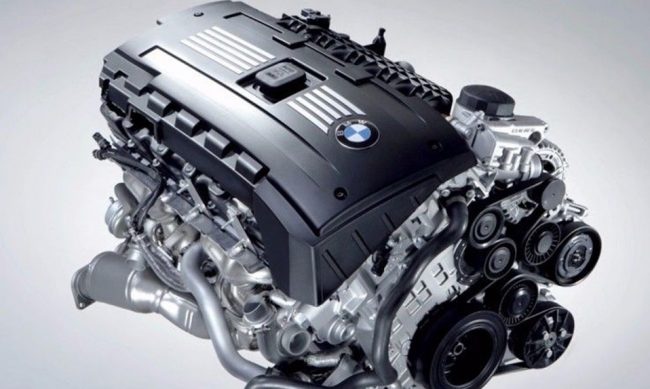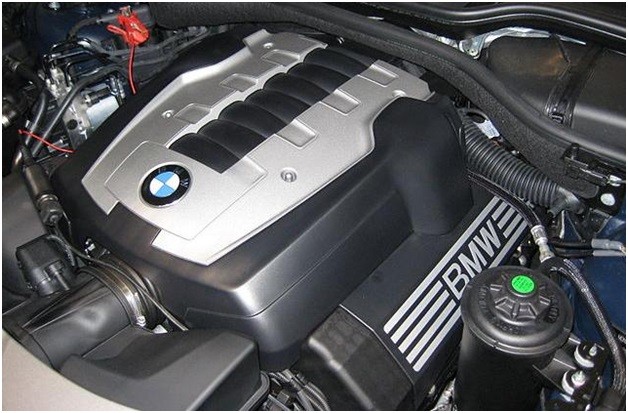
BMW 5 series e60 engines
Content
The fifth generation of the BMW 5 Series was released in 2003. The car is a 4-door business class sedan. The body was named E 60. The model was released as a response to the main competitor - a year earlier, Mercedes introduced the public to the new W 211 E-class sedan.
The appearance of the car was different from the traditional representatives of the brand. Designed by Christopher Bangle and Adrian Van Hooydonk. Thanks to their work, the model received expressive lines and dynamic forms - a round front end, a hewn hood and stretched narrow headlights became a hallmark of the series. Along with the exterior, the filling of the car has also undergone changes. The model was equipped with new power units and electronic equipment, which controlled almost all mechanisms.
The car has been produced since 2003. He replaced his predecessor on the conveyor - the model of the E 39 series, which has been produced since 1995 and was considered one of the most successful developments. The release was completed in 2010 - the E 60 was replaced by a new car with an F 10 body.
The main assembly plant was located in the district center of the Bavarian region - Dingolfing. In addition, assembly was carried out in 8 more countries - Mexico, Indonesia, Russia, China, Egypt, Malaysia, China and Thailand.
Powertrain models
During the existence of the model, various engines were installed on it. For ease of perception of information, their list, as well as the main technical characteristics, are summarized in the table:
| Engine | N43B20OL | N47D20 | N53B25UL | N52B25OL | M57D30 | N53B30UL | N54B30 | N62B40 | N62B48 |
| Series Model | 520 | 520d | 523 | 525 | 525d, 530d | 530 | 535 | 540 | 550 |
| Volume cube cm. | 1995 | 1995 | 2497 | 2497 | 2993 | 2996 | 2979 | 4000 | 4799 |
| Power, hp from. | 170 | 177-184 | 190 | 218 | 197-355 | 218 | 306-340 | 306 | 355-367 |
| Type of fuel | Petrol | Diesel | Petrol | Petrol | Diesel | Petrol | Petrol | Petrol | Petrol |
| Average consumption | 8,0 | 4,9/5,6 | 7,9 | 9,2 | 6.9-9 | 8,1 | 9,9/10,4 | 11,2 | 10,7-13,5 |
The M 54 internal combustion engine deserves special mention. It is a six-cylinder in-line unit.
The cylinder block, as well as its head, is made of aluminum alloy. Liners are made of gray cast iron and are pressed into the cylinders. The undeniable advantage is the presence of repair dimensions - this increases the maintainability of the unit. The piston group is driven by one crankshaft. The gas distribution system consists of two camshafts and a chain, which increases its reliability.
Despite the fact that the M 54 is considered the most successful engine, violations of the operating conditions and frequency of maintenance can cause the owner a lot of problems. For example, in case of overheating, there is a high probability of cylinder head bolts sticking and defects in the head itself. The most common problems are:
- Malfunction of the differential crankcase ventilation valve;
- Interruptions in the operation of the gas distribution system;
- Increased oil consumption;
- The appearance of cracks in the plastic housing of the thermostat.
M 54 was installed on the fifth generation until 2005. It was replaced by the N43 series engine.
Now consider the power units that are most widely used.
N43B20OL
Motors of the N43 family are 4-cylinder units with two DOHC camshafts. There are four valves per cylinder. Fuel injection has undergone a major modification - power is organized according to the HPI system - the engine is equipped with injectors powered by hydraulic control. This design ensures efficient combustion of fuel.

The problems of this engine do not differ from other models of the N43 family:
- Short vacuum pump life. It starts to leak after 50-80 thousand km. mileage, which is a sign of an imminent replacement.
- Floating speed and unstable operation usually indicate the failure of the ignition coil.
- An increase in the level of vibration during operation may be due to clogging of the nozzles. In this case, you can try to solve the problem by flushing.
Experts recommend monitoring the temperature of the engine, as well as using only high-quality gasoline and lubricants. Compliance with the service interval, as well as the use of branded spare parts, is the key to long-term operation of the motor without serious problems.
These engines have been installed on the BMW 520 i model since 2007. It is noteworthy that the power of the power unit remained the same - 170 hp. With.
N47D20
It was installed on the most affordable and economical diesel modification of the series - 520d. It began to be installed after restyling of the model in 2007. The predecessor is the M 47 series unit.
The engine is a turbocharged unit with a capacity of 177 hp. With. There are 16 valves per four in-line cylinders. Unlike its predecessor, the block is made of aluminum and equipped with cast-iron sleeves. The common rail injection system with an operating pressure of up to 2200 with electromagnetic injectors and a turbocharger guarantees a highly precise fuel supply.
The most common engine problem is timing chain stretch. Theoretically, its service life corresponds to the engine life of the entire installation, but in practice it will have to be changed after 100000 km. run. A sure sign of a close repair is extraneous noise in the rear of the motor.

An equally common problem is the wear of the crankshaft damper, the resource of which is 90-100 thousand km. run. Swirl dampers can cause a lot of problems. Unlike the previous model, they cannot get into the engine, but during operation a layer of soot appears on them. This is a consequence of the operation of the EGR system. Some owners prefer to remove them and install special plugs. At the same time, the control unit is flashed for the changed operating conditions.
Like other models, the engine does not tolerate overheating very well. It leads to the formation of cracks between the cylinders, which are almost impossible to repair.
N53B25UL
The power unit from a German manufacturer, which was installed on cars with a 523i E60 body after restyling in 2007.
This powerful and reliable 6-cylinder in-line unit was developed from the N52. Characteristic features of the engine:
- From the predecessor got a lightweight magnesium alloy block and other components;
- The changes affected the gas distribution mechanism - the Double-VANOS system was modified;
- Manufacturers have abandoned the Valvetronic variable valve lift system;
- A direct injection system was introduced, which made it possible to increase the compression ratio to 12;
- The old control unit has been replaced by Siemens MSD81.
In general, the use of high-quality fuel and lubricants guarantees uninterrupted operation of the engine without serious breakdowns. A relatively weak point is considered high-pressure fuel pump and nozzles. Their service life rarely exceeds 100 thousand km.

N52B25OL
The engine is a petrol inline-six with a capacity of 218 hp. With. The unit appeared in 2005 as a replacement for the M54V25 series. A magnesium-aluminum alloy was used as the main material for the cylinder block. In addition, the connecting rod and piston group is made of lightweight material.
The head received a system for changing the distribution phases on two shafts - Double-VANOS. A metal chain is used as a drive. The Valvetronic system is responsible for adjusting the operation of the valves.

The main problem of the engine is associated with increased consumption of engine oil. In previous models, the cause was the poor condition of the crankcase ventilation system or prolonged movement at high speeds. For N52, increased oil consumption is associated with the use of thin oil scraper rings, which wear out already at 70-80 thousand km. run. During the repair work, experts recommend replacing the valve stem seals. On engines manufactured after 2007, such problems are not observed.
M57D30
The most powerful diesel engine in the series. It has been installed on the BMW 520d E60 since 2007. The power of the first engines was 177 hp. With. Subsequently, this figure was increased by 20 liters. With.

The engine is a modification of the M 51 installation. It combines high reliability and efficiency along with good technical characteristics. Thanks to this, the engine has received a large number of international awards.
The installation uses a turbocharger and intercooler, as well as a high-precision common rail injection system. A reliable timing chain is able to work without replacement throughout the entire life of the engine. The moving elements are matched perfectly, which made it possible to practically eliminate vibration during operation.
N53B30UL
This naturally aspirated engine has been used as the power unit of the BMW 530i since 2007. It replaced the N52B30 on the market with a similar volume. The changes affected the power supply - a direct fuel injection system is installed on the new engine. This solution allowed to increase the performance of the engine. In addition, the designers abandoned the Valvetronic valve control system - it showed mixed results, which caused a number of criticisms from leading automotive publications. The changes affected the piston group and the electronic control unit. Thanks to the introduced changes, the environmentally friendly standard of the engine has increased.


Watch this video on YouTube
The unit has no pronounced flaws. The main condition for operation is the use of high-quality fuel. Failure to comply with this requirement threatens serious damage to the power system.


N62B40/V48
The line is represented by large-volume power units with various power ratings. The predecessor of the engine is the M 62.
Representatives of the family are 8-cylinder V-type engines.


Significant changes were made to the material of the cylinder block - to reduce the mass, they began to use silumin. The engines are equipped with a Bosch DME control system.
A characteristic feature of the series is the rejection of a manual transmission, due to the large amount of electronic equipment. This reduces the life of the engine by almost half.


Watch this video on YouTube
The main problems begin to appear closer to 80 thousand km. run. As a rule, they are associated with violations of the gas distribution system. Among the shortcomings, the low life of the ignition coil and increased oil consumption are also distinguished. The last problem is solved by replacing the oil seals.
Subject to the operating conditions, the engine life reaches 400000 km. run.
Which engine is better
The fifth generation of the 5 series offers motorists a variety of powertrains - from 4 to 8-cylinder. The final choice of engine depends on the tastes and preferences of the driver.
Motors of the "M" family are of the old type, although in terms of reliability and power they are not inferior to later versions with direct injection. In addition, it is not so picky about the quality of fuel and lubricants.


Watch this video on YouTube
Regardless of the engine family, the main problems are associated with chain stretch and increased oil consumption.
It should be remembered that now the main problem is to find a really well-groomed copy with careful operation.

